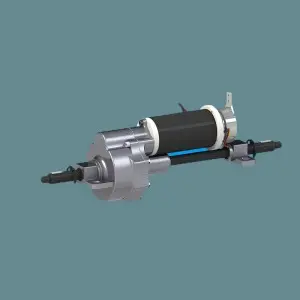In the world of automotive engineering, the term “transaxle” often comes up in discussions about vehicle design and performance. A transaxle is a crucial component that combines the functions of a transmission and an axle into a single unit. This innovative design is particularly beneficial in certain types of vehicles, allowing for more efficient use of space and weight distribution. In this article, we will explore what a transaxle is, its advantages, and the types of automobiles in which it is most commonly found.
What is a Transaxle?
A transaxle is a mechanical assembly that integrates the transmission, differential, and drive axle into one compact unit. This design is primarily used in front-wheel-drive (FWD) vehicles, where the engine is located at the front of the car, and the power needs to be transmitted to the front wheels. The transaxle allows for a more straightforward layout, reducing the number of components needed and optimizing the vehicle’s overall weight.
The transaxle typically consists of several key components:
- Transmission: This part is responsible for changing the gear ratios, allowing the vehicle to accelerate and decelerate efficiently. It can be either automatic or manual, depending on the vehicle’s design.
- Differential: The differential allows the wheels to rotate at different speeds, which is essential when turning corners. Without a differential, the wheels would be forced to rotate at the same speed, leading to tire wear and handling issues.
- Drive Axle: The drive axle transmits power from the transmission to the wheels, enabling the vehicle to move.
By combining these components into a single unit, manufacturers can save space and reduce weight, which can lead to improved fuel efficiency and handling characteristics.
Advantages of a Transaxle
The transaxle design offers several advantages over traditional separate transmission and axle systems:
- Space Efficiency: By integrating multiple components into one unit, transaxles free up space in the vehicle’s chassis. This is particularly beneficial in compact cars where space is at a premium.
- Weight Reduction: A transaxle can be lighter than a traditional setup, which can improve fuel efficiency and performance. Lighter vehicles require less energy to move, leading to better gas mileage.
- Improved Handling: The transaxle’s design allows for a lower center of gravity, which can enhance a vehicle’s handling characteristics. This is especially important in performance-oriented vehicles.
- Simplified Manufacturing: Fewer components mean simpler assembly processes, which can reduce manufacturing costs and time.
- Enhanced Traction: In front-wheel-drive vehicles, the transaxle’s design helps distribute weight more evenly over the front wheels, improving traction and stability, especially in adverse weather conditions.
Types of Automobiles That Commonly Use Transaxles
Transaxles are most commonly found in front-wheel-drive vehicles, but their use is not limited to this category. Here are some types of automobiles where transaxles are frequently employed:
- Compact Cars: Many compact cars utilize transaxles due to their space-saving design and weight efficiency. Models like the Honda Civic, Toyota Corolla, and Ford Focus often feature transaxles, making them popular choices for urban driving.
- Sports Cars: Some sports cars, particularly those with a mid-engine layout, use transaxles to optimize weight distribution and handling. The Porsche 911 is a prime example, where the transaxle contributes to the car’s performance and agility.
- Luxury Vehicles: High-end luxury vehicles often incorporate transaxles to enhance performance and provide a smoother driving experience. Brands like Audi and BMW utilize transaxles in their FWD and AWD models to improve handling and comfort.
- Electric Vehicles (EVs): As the automotive industry shifts towards electric mobility, transaxles are becoming increasingly common in electric vehicles. The compact design of a transaxle aligns well with the space constraints of electric drivetrains. For instance, the Tesla Model 3 features a transaxle that efficiently manages power delivery to the wheels.
- Hybrid Vehicles: Hybrid cars, which combine internal combustion engines with electric motors, often use transaxles to manage the power from both sources. The Toyota Prius is a well-known example of a hybrid vehicle that employs a transaxle to optimize fuel efficiency and performance.
- All-Wheel Drive (AWD) Vehicles: Some AWD systems utilize transaxles to distribute power to all four wheels effectively. This design helps improve traction and stability, especially in challenging driving conditions. Vehicles like the Subaru Outback and Audi Q5 often feature transaxles in their AWD configurations.
Conclusion
In summary, a transaxle is a vital component in many modern automobiles, particularly in front-wheel-drive vehicles, compact cars, sports cars, luxury vehicles, electric vehicles, hybrid vehicles, and all-wheel-drive systems. Its ability to combine the functions of a transmission and axle into a single unit offers numerous advantages, including space efficiency, weight reduction, improved handling, and enhanced traction.
As the automotive industry continues to evolve, the transaxle’s role is likely to expand, especially with the growing popularity of electric and hybrid vehicles. Understanding the significance of transaxles can provide valuable insights into automotive design and engineering, highlighting the innovative solutions that manufacturers employ to meet the demands of modern drivers. Whether you’re a car enthusiast or simply someone interested in how vehicles work, the transaxle is a fascinating topic that underscores the complexity and ingenuity of automotive technology.
Post time: Nov-13-2024


